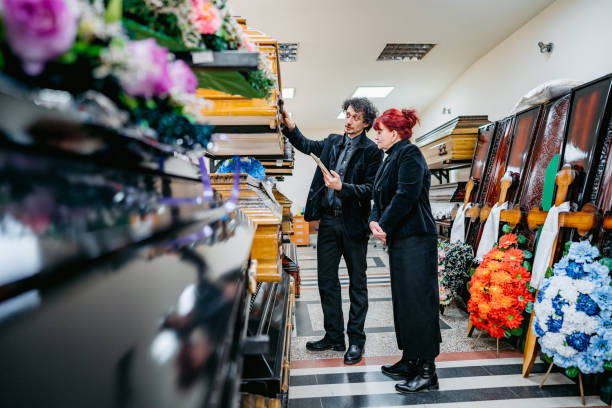The process of choosing how to dispose of a loved one’s body after their passing can be a daunting and emotional experience. Burial and cremation are the most common options, each with their own advantages and drawbacks. Religious beliefs, environmental concerns, and budget are just a few of the factors that must be considered before making a decision.
This article will provide an informative and objective analysis of the burial vs. cremation debate, exploring the steps involved in each process, religious beliefs surrounding burial and cremation, the environmental impact of both options, and the cost breakdown of each.
It is important to note that clear communication of wishes is crucial when it comes to disposing of a body after death. The process can be costly and emotionally taxing, making it all the more important to make an informed decision. This article aims to provide readers with the necessary information to make an informed choice, while also acknowledging the sensitive nature of the topic.
Ultimately, the decision of how to dispose of a loved one’s body is a personal one that requires careful consideration and empathy.
Body Disposal Options
When considering options for body disposal, individuals must choose between burial and cremation. Both methods have their advantages and disadvantages, and the decision ultimately depends on factors such as religion, environmental impact, and budget.
Religious beliefs play a significant role in the choice of body disposal method, with some faiths requiring specific practices and others leaving the decision up to personal preference. For example, Christianity and Catholicism often prefer traditional burial, while Hinduism and Buddhism prefer cremation. It is important to consider one’s religious beliefs when making this decision.
Another factor to consider is the environmental impact of each method. Burial can be harmful to the environment due to the use of resources, toxic chemicals, and land use, while cremation is better for the environment but still requires power and releases toxins into the air. It is important to weigh the impact of each method on the environment and consider alternative options such as green burial or eco-friendly cremation.
Ultimately, the decision between burial and cremation should be made with careful consideration of these factors and with respect to the wishes of the deceased and their loved ones.
Factors to Consider
One crucial aspect to consider when deciding between burial and cremation is the impact each option may have on the environment. Burial requires the use of resources to manufacture caskets, grave liners, and headstones, as well as toxic chemicals for embalming. In addition, burial takes up large amounts of land, which can be detrimental to the environment. On the other hand, cremation releases toxins into the air and requires the use of power, although it is still considered better for the environment than burial.
Religious beliefs can also play a role in the decision between burial and cremation. Different religions have varying beliefs and customs regarding body disposal. For example, Christianity and Catholicism generally prefer burial, while Hinduism and Buddhism typically prefer cremation. It is important to consider these beliefs and customs when making a decision, as it can be a significant factor in honoring the deceased and respecting their beliefs.
| Burial | Cremation | |||
|---|---|---|---|---|
| Environmental impact | Harmful due to resources, toxic chemicals, and land use | Better than burial, but still requires power and releases toxins into the air | ||
| Religious beliefs | Christianity and Catholicism generally prefer burial; Hinduism and Buddhism typically prefer cremation | Varying beliefs and customs regarding body disposal | For example, in some Native American cultures, the body may be left in the open to decompose naturally, while in some African cultures, the body may be buried in a standing position to symbolize the deceased’s transition to the afterlife. |
Steps and Costs Involved
The process of body disposal involves various steps and costs that need to be considered carefully before making a decision. For those choosing cremation, there are several options for containers that can hold the ashes, including biodegradable urns, keepsake urns, and jewelry. It is important to consider religious beliefs and customs when selecting a container, as some religions may have specific requirements or preferences.
Religious beliefs and cremation can also impact the overall process and costs involved. Some religions may require a funeral service before the cremation, while others may prohibit embalming or certain types of containers. It is important to research and understand these beliefs and customs before making any decisions.
Additionally, the cost of cremation can vary depending on whether a funeral service is included, the type of container chosen, and any additional services or products desired.
Overall, it is crucial to carefully consider all steps and costs involved in the cremation process before making a final decision.
- Cremation container options: biodegradable urns, keepsake urns, and jewelry
- Religious beliefs and customs: may affect the overall process and costs involved
- Research and understanding of religious beliefs and customs is crucial
- Cost of cremation: varies depending on type of container, additional services or products desired


